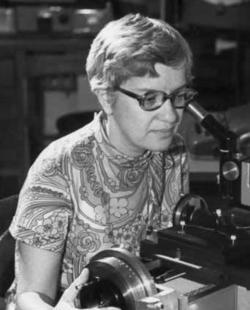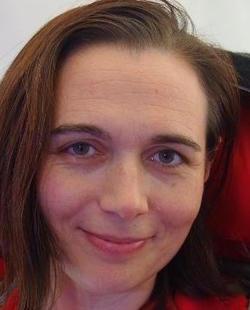Astro-Scientists
Theodore Roosevelt said, “Keep your eyes on the stars and your feet on the ground.” Vera Cooper Rubin and Sheyna Gifford have lived more literally by those words than most, dedicating their careers to furthering our understanding of the cosmos while keeping their feet firmly planted on planet Earth. Following different career paths in very different times, Rubin and Gifford have expanded human possibilities for understanding—and exploring—space.
Vera Cooper Rubin began her path toward astronomy at ten years old, staring out her north-facing bedroom window at the night sky. By fourteen, she’d built her first homemade telescope, and after graduating from high school studied astronomy at Vassar. Consider just how rare it was for a woman to make such a choice in the 1940s: not only was Rubin the only astronomy major at her women’s college, she was flatly denied entry to Princeton, her chosen graduate school, because of her gender. This was in 1948. Princeton did not accept women in their graduate astronomy program until 1975. Young Vera’s path was not just unusual, it was practically unheard of.
Unsurprisingly, Rubin struggled to be taken seriously as a woman astronomer early in her career. Her thesis at Cornell, where she was permitted to enroll for a Master’s degree, was met with hostility by her peers. Her doctoral work at Georgetown, which argued that galaxies clumped together rather than being randomly distributed through the universe, wasn’t seriously explored for another 20 years after she first published her findings. As with so many women who are pioneers in their fields, it wasn’t until much later in her life and career that her early work was revisited with interest and respect. Today, Rubin is best-known for helping find the first evidence of dark matter in the universe, confirming that the universe’s mass is made up mostly of matter we cannot see. Since 1978, she studied more than 200 galaxies.
Beyond her vast contributions to astronomy, Rubin spent decades advocating for women in her field. She was the second woman ever elected to join the National Academy of Sciences (after Florence R. Sabin), an organization that in 2015 finally elected its first woman president, geophysicist Marcia K. McNutt. Not only did Rubin speak and write on the importance of women pursuing careers in the sciences, she also used her role as a professor to directly support female students. Her influence on younger women scientists is demonstrated by Sandra Faber, one of Rubin’s advisees who herself became a prizewinning astrophysicist.
Though she is often quoted for saying, "Fame is fleeting. My numbers mean more to me than my name," Vera Cooper Rubin's name has become an inspiration to women in science, and her work a north star for them to follow. Rubin died in 2016.
There’s space, and then there’s “space.” When Dr. Sheyna Gifford jokes about being the only Jew on Mars, she’s not actually on Mars, she’s on “Mars”: a simulated Martian environment in Hawaii. In a 1,700-sq-ft dome on Hawaii's Big Island, Gifford is part of a six-member crew i that is conducting a year-long simulated NASA space mission to Mars. They’re testing the practical and logistical issues that accompany such a long, isolating space journey (the return trip alone will take three years!), with the intention of using their findings to advance future missions to the fourth planet from the sun.
A physician and neuroscientist, Gifford has been involved in space research since 1997, and is serving as Health Science Officer for this mission, officially called NASA HI-SEAS IV space exploration analogue. The crew also includes an astrobiologist, a spacecraft engineer, a space architect, a field biologist, and a fluid physicist. All are under constant surveillance to provide answers to the question, “What happens when you isolate six scientists in a solar-powered dome for 365 days?”
As the crew journalist for the simulated mission, Gifford is also tasked with writing regular updates from “Mars” on her blog and for the Huffington Post, allowing readers inside access to the daily minutiae of life in space. As the only Jewish member of her crew, her dispatches often include meditations on what it means to be Jewish on “Mars.” She comments on the strangeness of celebrating Jewish holidays alone, for example, and reflects on Jewish attitudes toward space exploration. She even noted her plans to make challah while on the mission, and marked Rosh Hashanah by posting a poem by the Jewish poet Marge Piercy on her blog.
Though Gifford is the only Jew on her mission she is, notably, not the only woman: NASA assigned three woman and three men to HI-SEAS IV, creating a gender-balanced crew. Fitting, since like Vera Rubin, Gifford is also an outspoken advocate for educating women in STEM fields.
When Vera Rubin was growing up, she had no women astronomers to look to for inspiration. As Sheyna Gifford was dreaming of space, she had a handful of women to use as role models. Now, little girls all over the world are reading Sheyna Gifford’s dispatches from her NASA mission, seeing her accomplishments as achievable goals, and hatching dreams of becoming astronauts and astronomers. One small step for Sheyna, one giant leap for womankind.




